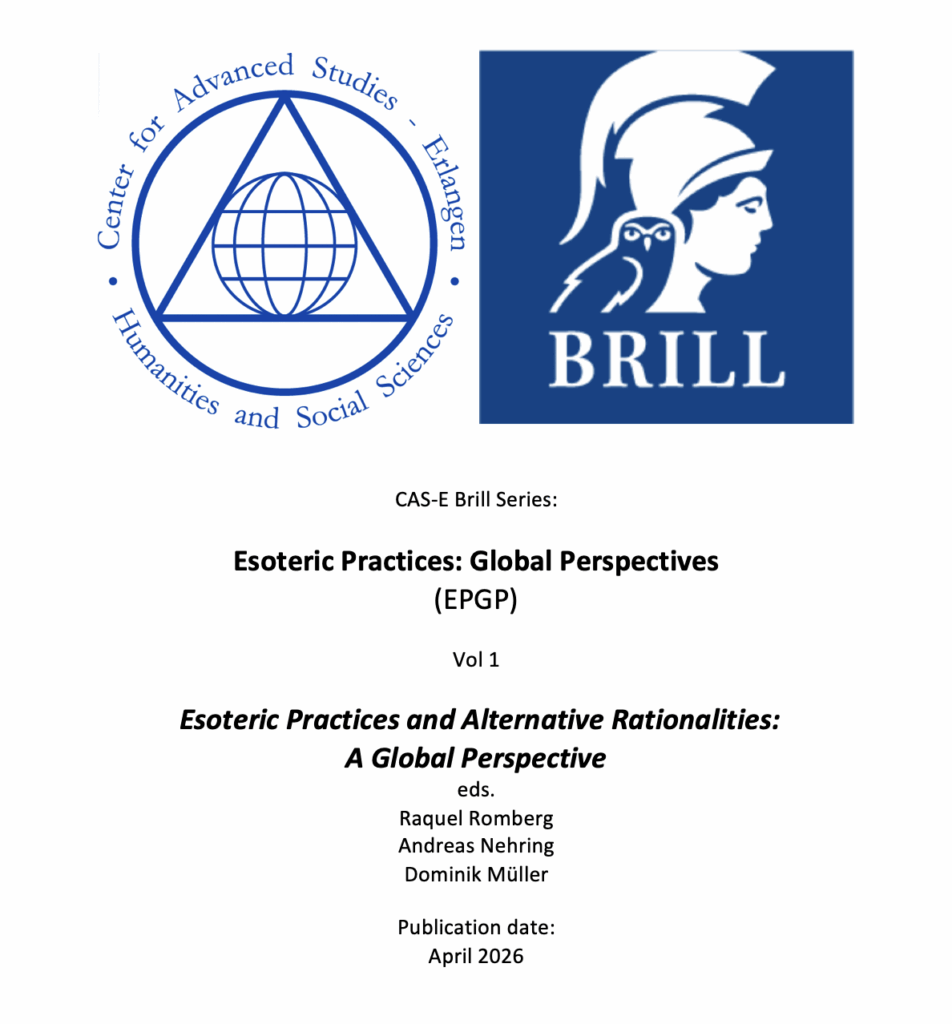
Abstract for edited series:
Esoteric practices are flourishing in contemporary societies, which can be labeled as spiritual, magical, shamanic, New Age, or folk religious, depending on the theoretical perspective. This series will trace them from an interdisciplinary and global perspective, focusing on the ways in which these esoteric practices reshape and revitalize older practices in new contexts among new publics, creating new practices by embracing new technologies that extend their influence globally and avoid stigmatization or persecution, and use social media in worldwide activist projects. In short, this series addresses the connection between esoteric practices and political forces, legal frameworks, governmental projects, environmental concerns, cultural and social processes, economic and consumer opportunities, and embodied, sensorial, and artistic aspects of experience. The series adopts a combined diachronic and synchronic approach to contemporary esoteric practices, emphasizing their pragmatic goals and analysing their comparative aspects. In this way, this series promotes a discussion of the alternative rationales underlying the various forms of esoteric practices, with the aim of foregrounding the analytical frameworks underlying their study.
Table of Contents:
Introduction: Alternative Rationalities and Esoteric Practices: a Global Perspective
Andreas Nehring and Raquel Romberg
Part I: Crossovers
Chapter 1: The Fantastic Foundations of Reality
Jeffrey J. Kripal
Chapter 2: Uncanny Returns: Personhood and Its Doubling
Jean Comaroff
Chapter 3: Searching for the Wings of the Wind in New York City
Paul Stoller
Chapter 4: Exorcism and Psychiatry
Thomas J. Csordas
Part II: Encounters
Chapter 5: Mircea Eliade and the Multiple Entanglements in the History of Religions: A Critical Exploration
Stefanie Burkhardt
Chapter 6: Alternative Rationalities and the Reinvention of Tradition: Vedic Science and the Agnihotra-Fire Ritual
Andreas Nehring
Chapter 7: Ignatius Meets Yogananda: Varieties of Meditative Experience
Thomas J. Csordas, Isabel Castro, and Luis Muñoz-Villalón
Chapter 8: Learning with the Gods in China, 1600–1900
Vincent Goossaert
Part III: Configurations
Chapter 9: Protest Deities and the Logic of Images: Images as Epistemic Agents in Japanese Religion
Tomoë I. M. Steineck
Chapter 10: The Power of Transgression in Esoteric and Artistic Practices
Marco Pasi
Chapter 11: Becoming a Master: Materializing Esoteric Wisdom in Brazil’s Valley of the Dawn
Kelly E. Hayes
Part IV: Revampings
Chapter 12: Divinators, Marriage Alliances and an Accident: Contingency Management and Conflict Resolution in an East Indonesian Local Culture
Karl-Heinz Kohl
Chapter 13: Post-Pandemic Paranormal Healing: Javanese Practitioners’ Repositionings
Judith Schlehe
Chapter 14: The Legitimation of Authority in a Modernizing Esoteric Society: the Case of Newar Buddhism
David N. Gellner and Samuel M. Grimes
Part V: The Body and the “Archipelago of Anthropological Phenomenology” of Robert Desjarlais
Chapter 15: Sampling Desjarlais’ Archipelago: a Voice-Over of Phenomenological Reflections on the Body, Presence, Poiesis, and Phantasms
Lecture: Robert Desjarlais Voice-Over: Raquel Romberg and Andreas Nehring
Chapter 16: Dialogue with Desjarlais About Presence: Illness, Healing, and Bodily Sensibilities in the Nepal Himalayas
Discussant: Raquel Romberg
Chapter 17: Dialogue with Desjarlais About Critical Phenomenology, Struggling Along, Homelessness, and Experience
Discussant: Knut Graw
Chapter 18: Dialogue with Desjarlais About Poiesis: Life, Loss, Dying and Death Among Nepal’s Yolmo Buddhists
Discussant: Dendup Chophel
Chapter 19: Dialogue with Desjarlais About Phantasms: Photography, Images, Spectrality and Phantasmography in Paris
Discussant: Conerly Casey
Afterword: The Study of Esoteric Practices: Broadening Spaces and Potentials
Dominik M. Müller
Notes on Contributors








